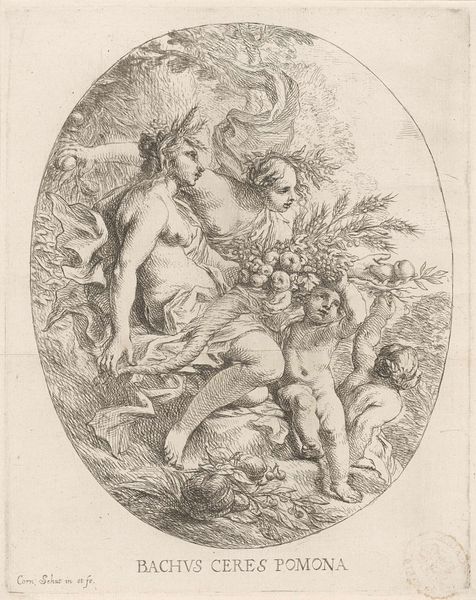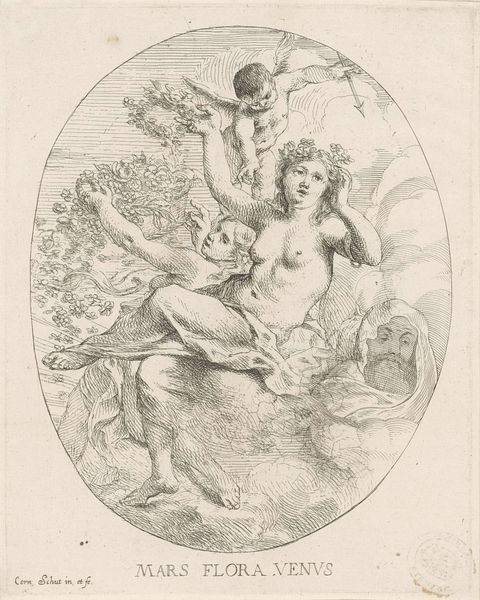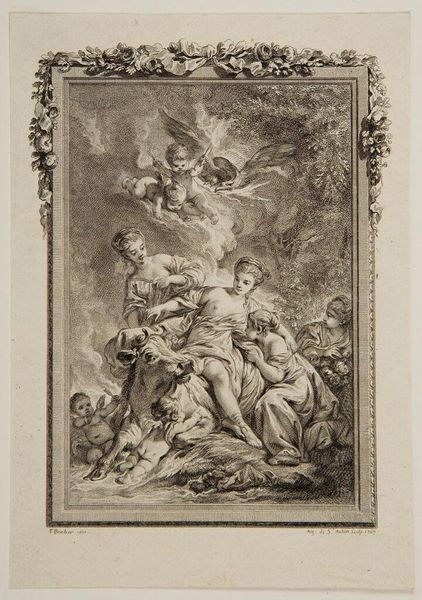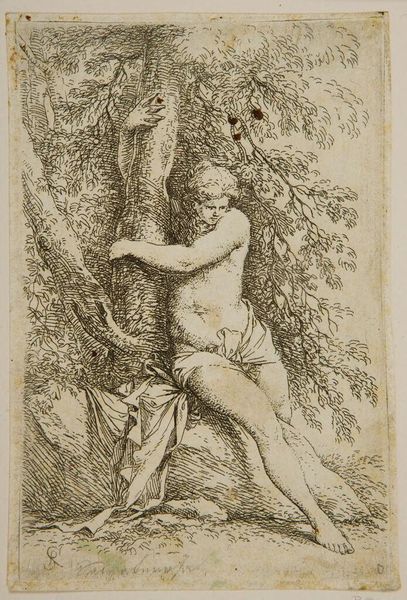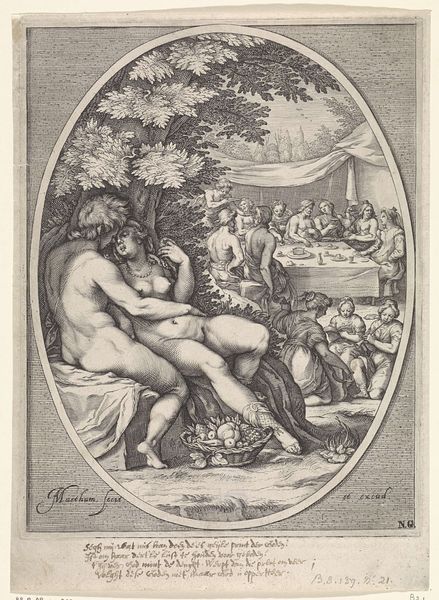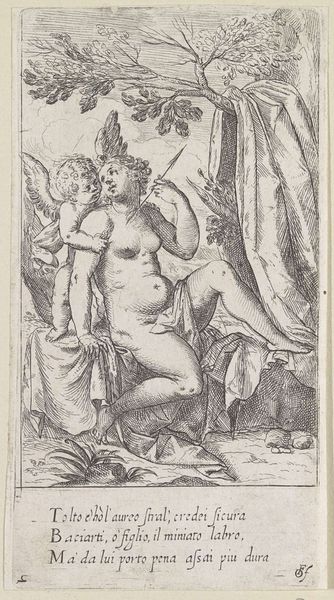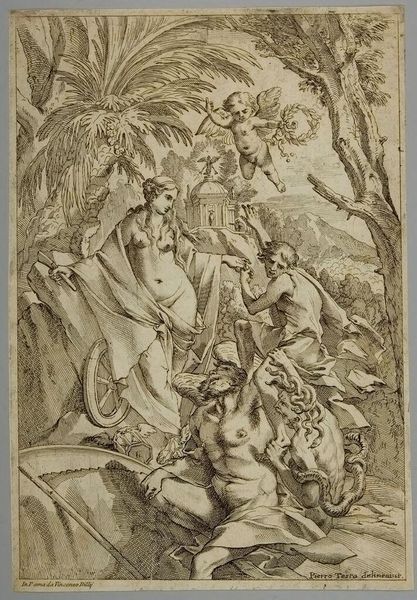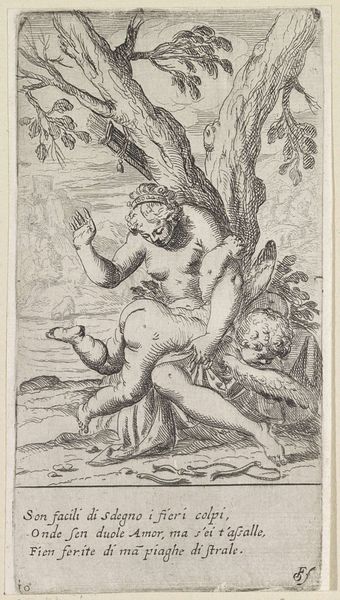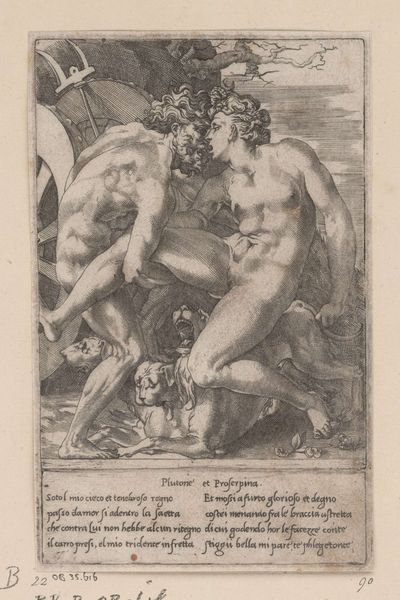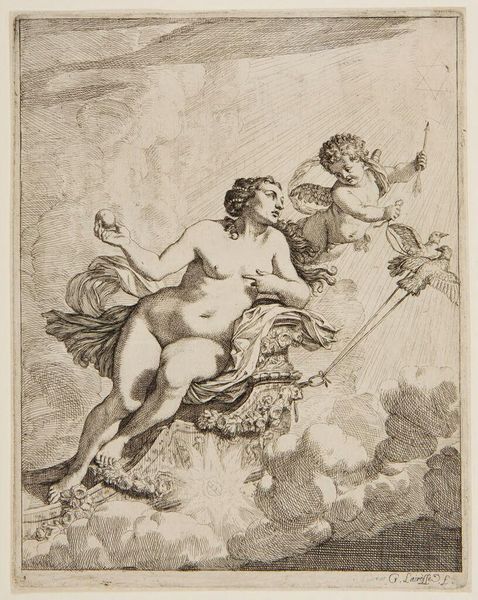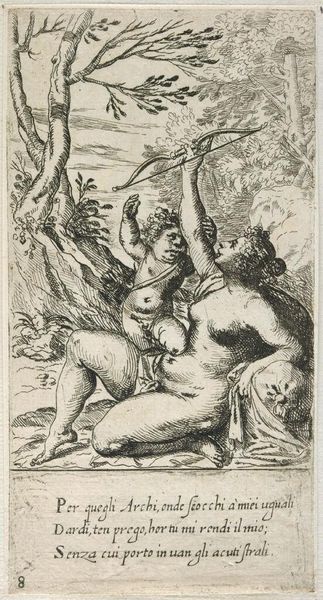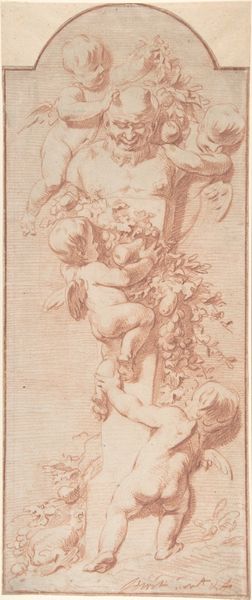
Copyright: CC0 1.0
Editor: Here we have Cornelis Schut's "Bacchus, Ceres, and Pomona." The three figures, along with what looks like a putto, are surrounded by fruits and foliage, all rendered in delicate lines. What sociopolitical readings can we draw from this abundance? Curator: The composition echoes themes of prosperity and fertility, common in art commissioned by the elite, but consider who benefits from such abundance. Does this idealized vision mask the realities of labor and access to resources? Editor: So, it's not just a celebration, but maybe a commentary on wealth disparity? Curator: Perhaps. How does the artist’s choice of representing these figures, likely Greco-Roman deities, reinforce or challenge existing power structures of the time? Editor: I never thought about it that way. It’s more than just a pretty picture; it reflects complex social dynamics. Curator: Exactly. Art often holds a mirror to society, reflecting its ideals, but also its inequalities.
Comments
No comments
Be the first to comment and join the conversation on the ultimate creative platform.
